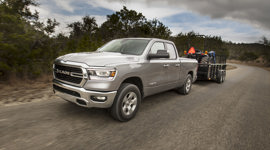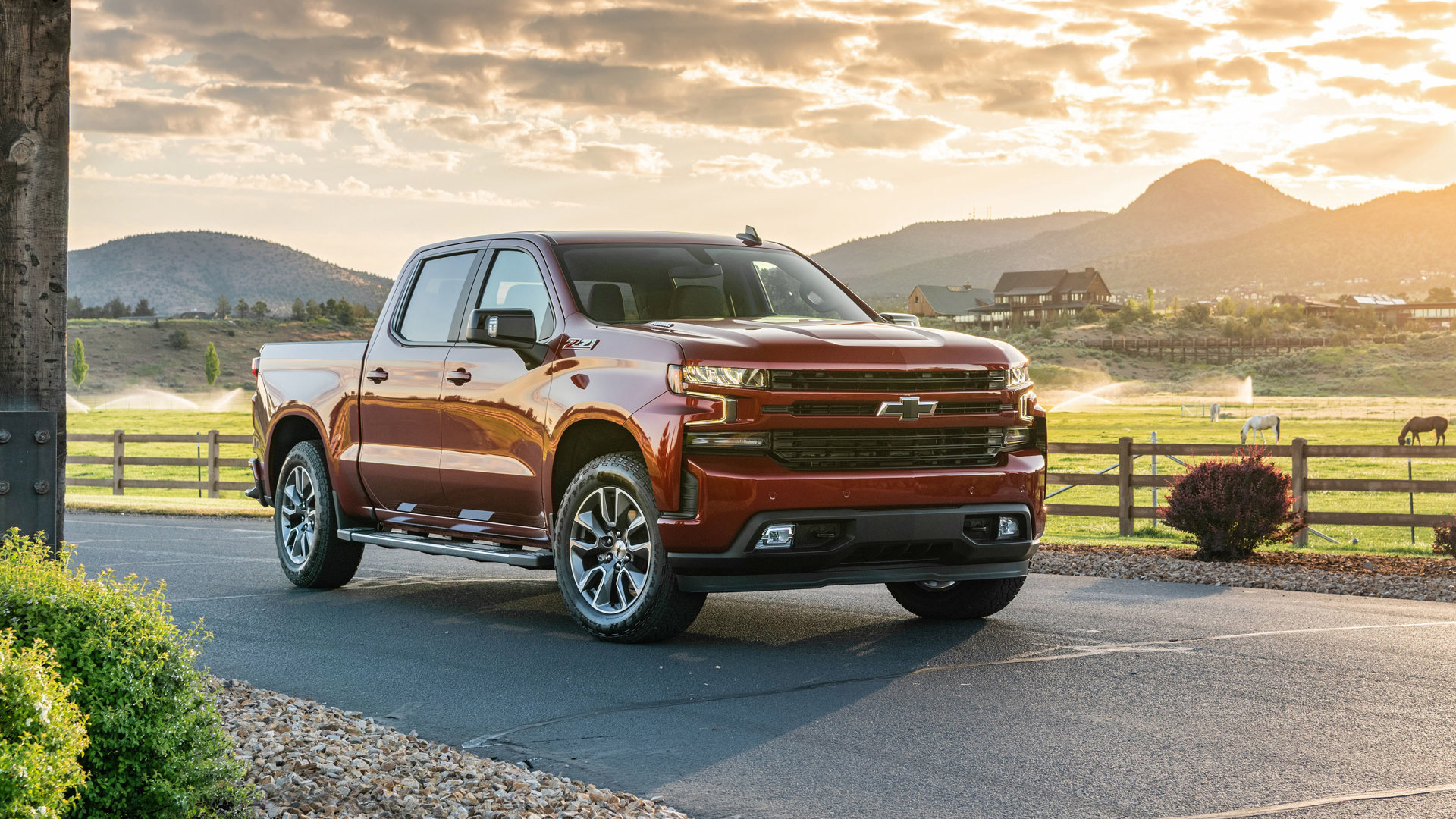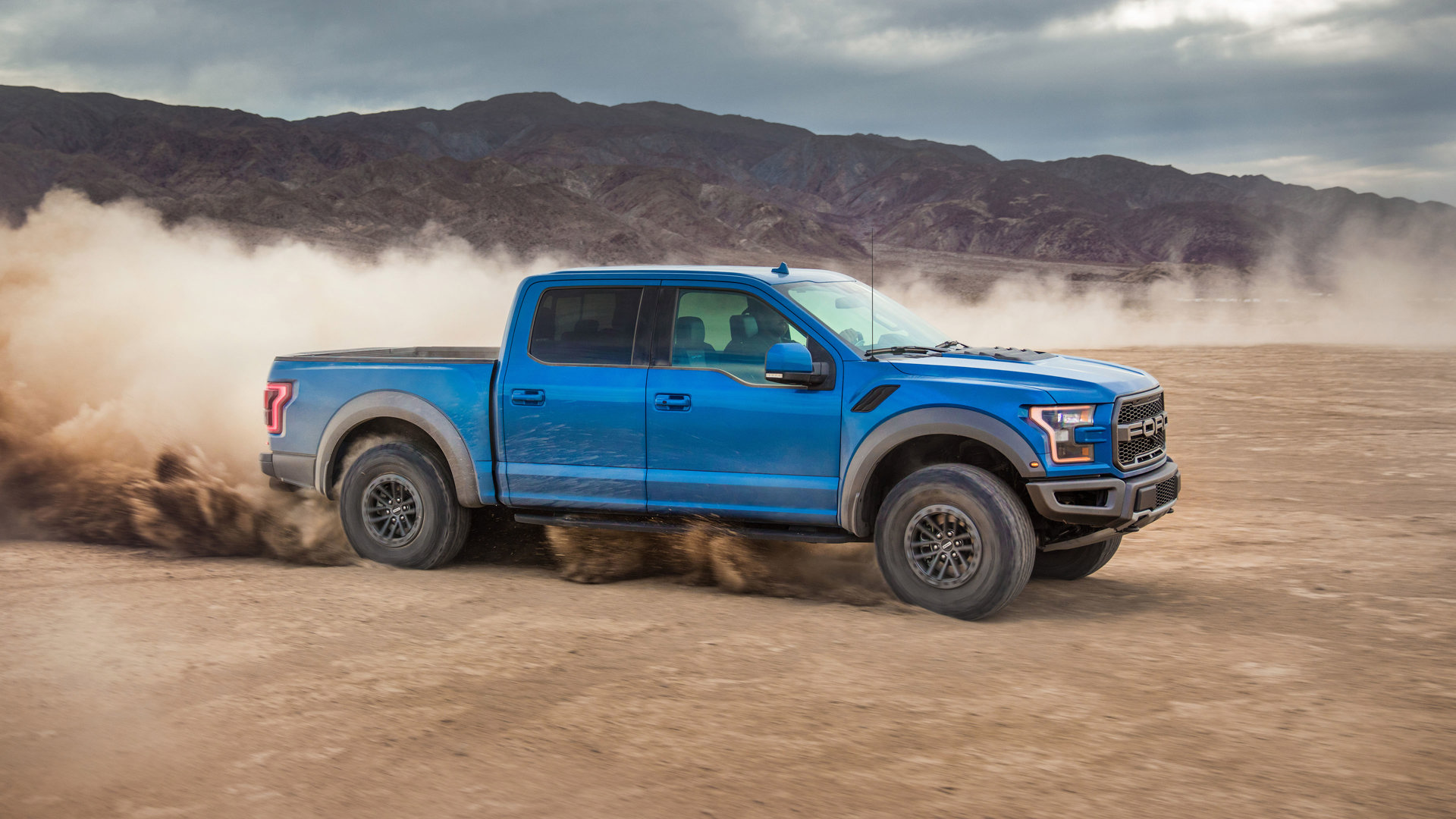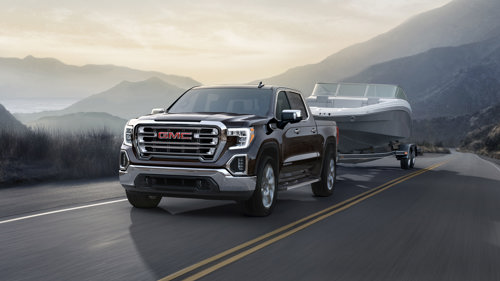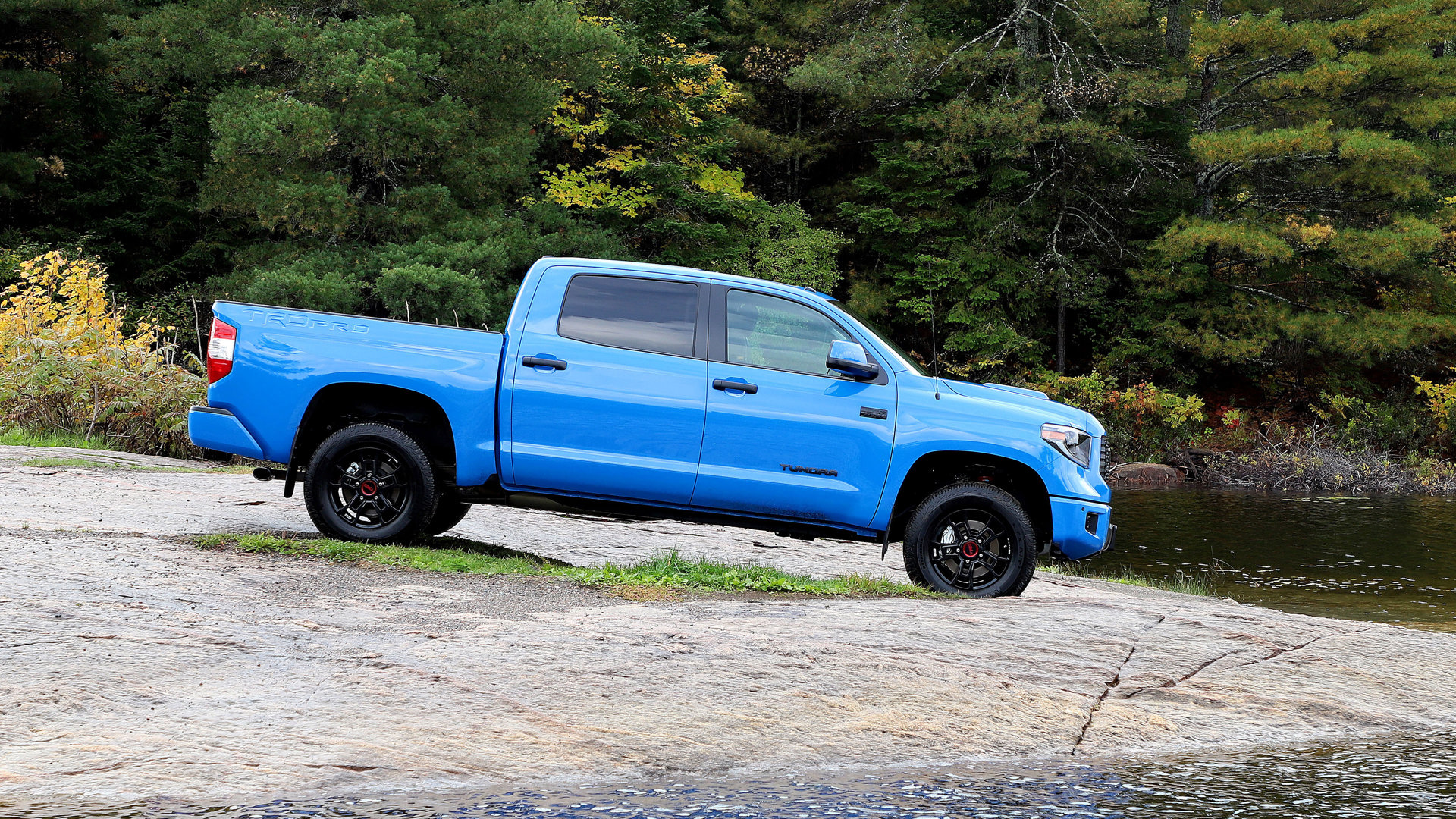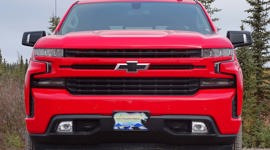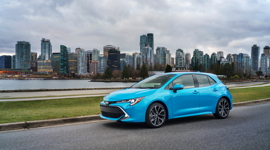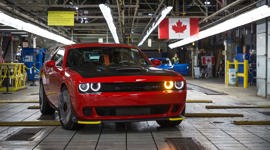It’s not an easy task to pick a “best” pickup truck, because there are so many reasons why people buy them – some for work, some for play, and some because they just happen to like them. Our jury of more than 20 automotive experts had to consider all these reasons when voting on candidates for our best full-size truck shortlist. We assessed every new half-ton truck available to Canadians to buy to vote on these finalists. Only one will emerge victorious, of course, and we’ll announce the winner on January 20, 2020.
Our finalists have come down to the 2020 Chevrolet Silverado, Ford F-150, GMC Sierra, Ram 1500, and Toyota Tundra. That’s pretty much all of them, save one: Nissan is launching an all-new Titan, but it won’t be available for us to fully test and evaluate before our votes are due.
Even though all but the Tundra are available in heavier-duty versions, we’re strictly comparing the light-duty variety, often known as half-tons. We look at how much these trucks are able to do and what their capabilities are, but we also know how towing works: Manufacturers advertise big towing capacity numbers, but they’re the maximum across the lineup. The truck’s weight affects how much it can pull, and the highest number is usually for a Regular Cab 4x2, while more popular configurations, like the Crew Cab 4x4, will be rated for less.
So while we consider towing and payload capacity heavily in our voting, advertising the highest number in the segment does not automatically lock in a win. We’re also looking at how these trucks stack up overall for buyers, which includes engine performance, handling, interior comfort, safety and connectivity features, fuel economy, ergonomics, off-road capability, user-friendliness, clever features, and just the general “bang for the buck.”
Here is some more information on our finalists.

Chevrolet Silverado
The Silverado was an all-new truck for 2019, and so it switches into 2020 with very few changes. There are six engine choices, including a turbocharged 2.7L four-cylinder – the lone four-cylinder among all full-size contenders – along with a 4.3L V6; two versions of a 5.3L V8; a 6.2L V8; and a 3.0L inline-six turbodiesel that makes 460 lb-ft of torque (as does the 6.2L V8). All transmissions are automatics, and come with six, eight, or 10 speeds, depending on the engine.
Most engines come with active fuel management, which shuts off specific cylinders for better fuel economy when full power isn’t needed, but there’s also a dynamic system that deactivates various cylinders, dropping right down to one piston when it’s appropriate. The 5.3L V8 offers either active or dynamic fuel management, while the 6.2L V8 uses dynamic management only.
The new Silverado has a handsome interior, with controls that are laid out well and easy to use, and there’s a lot of storage space. There are also some cool tech features to help with towing, including a 15-camera system that creates a “transparent trailer” to help you see what’s happening behind you, although – as is often the case – most of these technologies only come in the priciest trims. Maximum towing capacity is 13,400 lbs, currently the leader in the segment, but see our note on towing above.
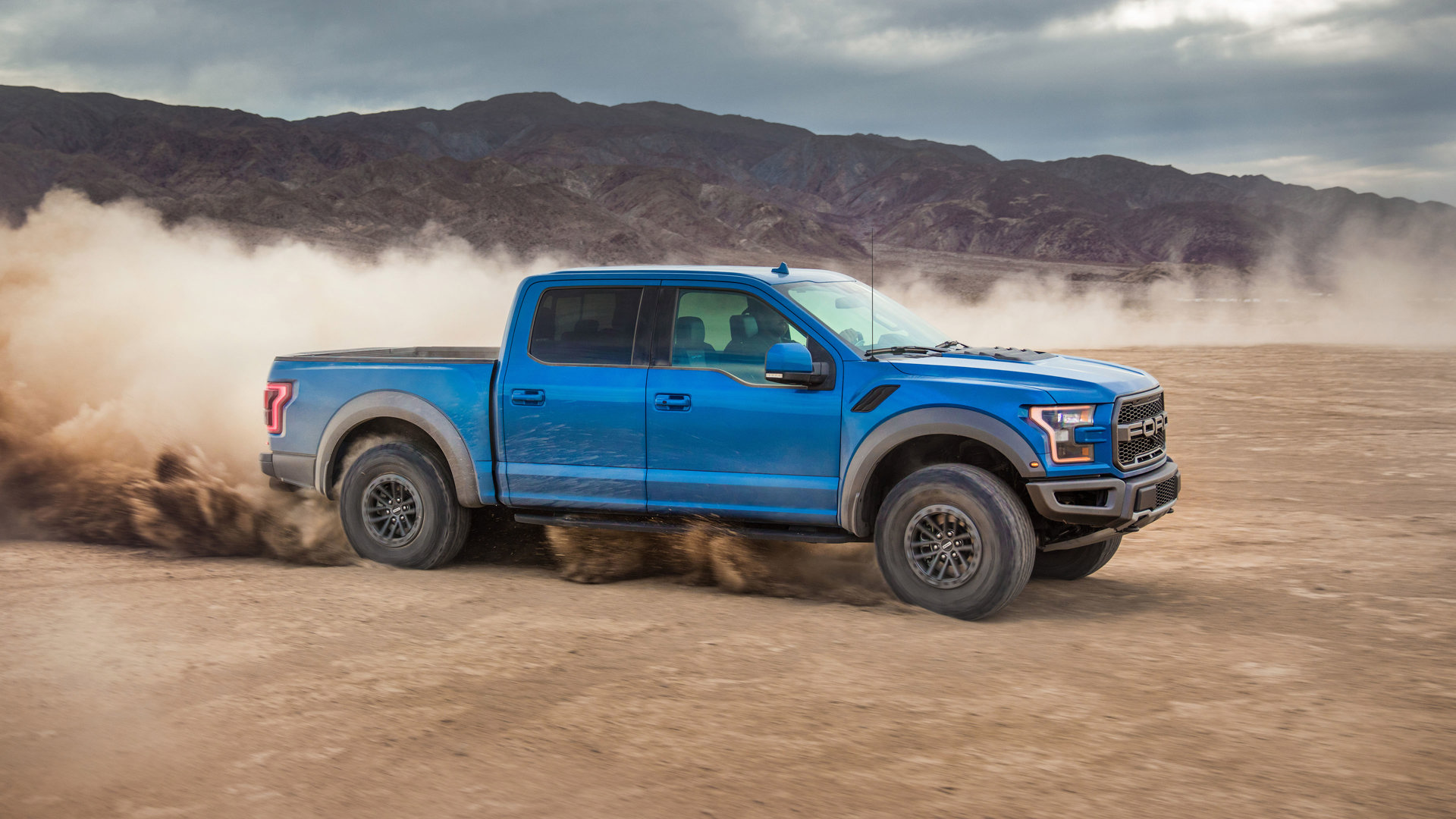
Ford F-150
The F-150 has been Canada’s best-selling vehicle for years, so there’s definitely some substance there. Ford offers six engines, using “EcoBoost” to indicate turbocharging: 2.7L V6 EcoBoost; 3.3L V6; 5.0L V8; regular and high-performance versions of the 3.5L V6 EcoBoost; and a 3.0L V6 Power Stroke diesel that makes 250 horsepower and 440 lb-ft of torque. The base V6 engine uses a six-speed automatic, while everything else gets hooked to a 10-speed transmission. Its maximum towing capacity is just under Chevrolet’s and ahead of the rest at 13,200 lbs.
The cabin design is chunky and truck-appropriate, and most of the controls can be easily operated with gloves. Ford pioneered the flat rear floor, making it easier to slide cargo into the cab. Access into the bed isn’t quite as easy as with GM’s integrated bumper steps, but Ford offers a step and handle that pulls out from the liftgate. You can also get stowable loading ramps, making it easier to load an ATV or dirt bike.
Of course, you can’t look at the F-150 without wanting to take the adventure-ready Raptor for a high-speed spin, thanks to its long-travel Fox shocks, 450-horsepower engine, and unique styling. It’s way over the top, but that’s really what’s so great about it.
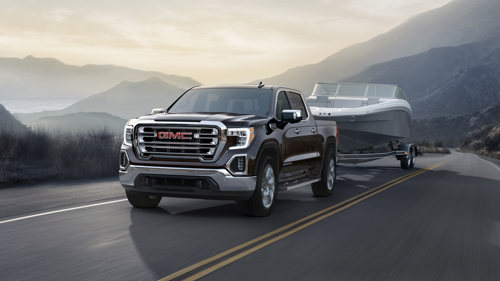
GMC Sierra
Arguably better looking than the Chevrolet Silverado, the Sierra is its mechanical twin, offering the same six engine choices, but with a maximum towing capacity of 12,100 lbs. Like the Silverado, it offers the “transparent trailer” camera system, and an available app that, depending on how your RV’s equipped, lets you turn on its air conditioning or heater, check the levels in the water and holding tanks, and see how much fuel you’ve got for your generator, all from your phone.
The Sierra offers an off-road AT4 edition (Silverado has the Trailboss but with a different features list) that adds a lifted suspension with specialized shocks, mud tires, and hill descent control. The top of the heap is the Denali – Silverado has the High Country – that piles on all the luxury features, but of course at a corresponding price that starts close to $70,000.
One unique feature that no other truck here offers is an available tailgate, which has been dubbed MultiPro. It looks a little odd from behind, but the clever tailgate opens and adjusts six ways to carry a second tier of items, turn into a workstation, or make it easier to reach in. And for the truck owner who has everything but wants more, the upper trims offer a bed made of carbon fibre.
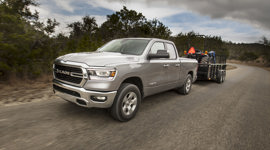
Ram 1500
The Ram 1500 was redesigned for 2019, and for 2020, brings back its 3.0L EcoDiesel V6 engine, making 260 horsepower and 480 lb-ft of torque. It’s offered alongside a 3.6L V6 and 5.7L Hemi V8, and all engines mate to an eight-speed automatic transmission.
Standard on the V6, and optional on the V8, is eTorque, a self-charging mild hybrid system with 48-volt battery. The truck can’t run on that battery alone, and the electric motor-generator isn’t meant to bolt it into the blue when you hit the throttle; instead, it’s primarily to smooth out the gear transitions on acceleration. The system also includes idle-stop, with the engine restarted by the electric motor.
Unique in the segment, the Ram 1500 trades traditional rear leaf springs for coil springs to improve the ride. It also offers a four-corner air suspension, which levels the truck when it’s loaded, and can be raised for off-roading, or lowered for easier entry – although its weight can cut dramatically into the truck’s payload. Maximum towing capacity is 12,750 lbs.
The Ram’s a looker both inside and out, with a cabin that can get seriously luxurious, and an available 12-inch centre touchscreen. So far, only Quad and Crew Cab models are available, and we’re not sure when (or even if) a Regular Cab will come back into the fold, given how many buyers prefer four doors on their pickups.

Toyota Tundra
Like the Ram 1500, the Tundra only comes in Double Cab and Crewmax configuration; the slow-selling Regular Cab was dropped after the 2017 model year. The Tundra hasn’t had a major upgrade in more than a decade – although we expect an entirely new one for 2021, possibly with a hybrid option – but it’s still a tough truck that has a lot of fans.
The Tundra offers only one engine, a 5.7L V8 making 327 horsepower and 401 lb-ft of torque, mated to a six-speed automatic transmission. For 2020, Toyota has finally dropped the truck’s other engine, a 4.6L V8. It was available in only one model and trim level, likely so the automaker could advertise a lower fuel economy figure, since the Tundra is thirstiest in the segment. It also has the lowest maximum towing capacity, at 10,000 lbs.
The Tundra’s cabin is well-finished, and while it’s definitely old-school compared to its recently updated competitors, there’s something refreshingly simple – as well as wonderfully easy to use – about its huge climate control dials, big spinning vents, and the function pads on the steering wheel. Adaptive cruise control, lane departure alert, emergency braking with pedestrian detection, and automatic high-beam headlights are standard on every model. And while everything else with an opening rear window only has a piece of sideways-sliding glass in the centre, the Tundra’s version opens completely, slipping down into the cab like the side windows do. Even the oldest truck in the running can still have some neat tricks up its sleeve.
